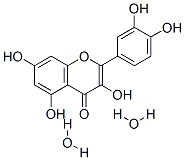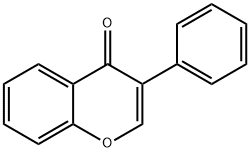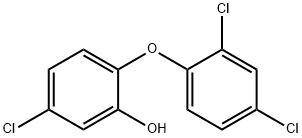Daidzein , ≥98% , 486-66-8
Synonym(s):
Daidzein;Isoaurostatin;4?,7-Dihydroxyisoflavone, Casein Kinase II Inhibitor X;4′,7-Dihydroxy-iso-flavone;7-Hydroxy-3-(4-hydroxy-phenyl)-4H-1-benzo-pyran-4-one
CAS NO.:486-66-8
Empirical Formula: C15H10O4
Molecular Weight: 254.24
MDL number: MFCD00016954
EINECS: 207-635-4
| Pack Size | Price | Stock | Quantity |
| 1G | RMB25.60 | In Stock |
|
| 5G | RMB37.60 | In Stock |
|
| 25G | RMB141.60 | In Stock |
|
| others | Enquire |
PRODUCT Properties
| Melting point: | 315-323°C (dec.) |
| Boiling point: | 317.45°C (rough estimate) |
| Density | 1.1629 (rough estimate) |
| refractive index | 1.4300 (estimate) |
| storage temp. | 2-8°C |
| solubility | DMSO: 10 mg/mL |
| pka | 7.01±0.20(Predicted) |
| form | Powder |
| color | White to off-white |
| biological source | synthetic |
| Water Solubility | insoluble |
| Merck | 14,2801 |
| BRN | 231523 |
| LogP | 2.632 (est) |
| CAS DataBase Reference | 486-66-8(CAS DataBase Reference) |
| EPA Substance Registry System | 4H-1-Benzopyran-4-one, 7-hydroxy-3-(4-hydroxyphenyl)- (486-66-8) |
Description and Uses
Daidzein mainly comes from leguminous plants, the seeds of soybean (dadou), red clover grass, or all Pueraria roots. Its medicinal value was first recorded in Shen Nong Ben Cao Jing 2838 BC.?Daidzein, one of the main soy isoflavones, is also the main component of radix puerariae (Gegen) which is the dry root of kudzu leguminous plants. Radix puerariae can reduce fever, produce saliva, and relieve diarrhea. Its chemical composition is complicated, including puerarin, xyloside, soy flavonoids, soybean flavonoid glycosides, beta-sitosterol, daidzin, daidzein. The main effective components are puerarin and daidzein
phytoestrogen
Safety
| Symbol(GHS) |  GHS07 |
| Signal word | Warning |
| Hazard statements | H315-H319 |
| Precautionary statements | P264-P280-P302+P352-P305+P351+P338-P332+P313-P337+P313 |
| Hazard Codes | Xi |
| Risk Statements | 36/38 |
| Safety Statements | 24-26-37/39 |
| WGK Germany | 3 |
| RTECS | DJ3100040 |
| HazardClass | IRRITANT |
| HS Code | 29329990 |





